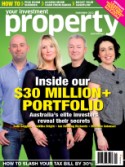 Ian Hosking Richards is part of Australia’s elite, a property investor with a portfolio valued at around $14m. Even more remarkable is that he built it from nothing, starting as a working holidaymaker who was earning just $35,000. Aidan Devine finds out how he did it.
Ian Hosking Richards is part of Australia’s elite, a property investor with a portfolio valued at around $14m. Even more remarkable is that he built it from nothing, starting as a working holidaymaker who was earning just $35,000. Aidan Devine finds out how he did it.
If you’re looking from a high vantage point, the Malaysian island of Penang affords a great view.
 Thanks to 32 Australian investments, tallying up $14m, Ian can afford a 6,000 square foot oceanfront penthouse in Penang, and says life couldn’t be better. “For a small portion of the year, I get a chance to be away from it all, and that’s great. I love Malaysian food, I love the climate. I feel very lucky to own a property there,” he says.
Thanks to 32 Australian investments, tallying up $14m, Ian can afford a 6,000 square foot oceanfront penthouse in Penang, and says life couldn’t be better. “For a small portion of the year, I get a chance to be away from it all, and that’s great. I love Malaysian food, I love the climate. I feel very lucky to own a property there,” he says.

